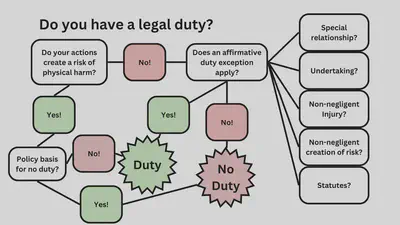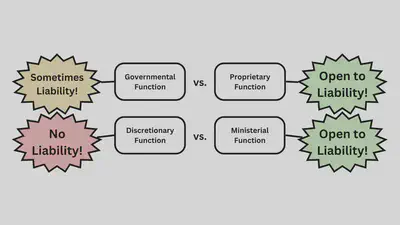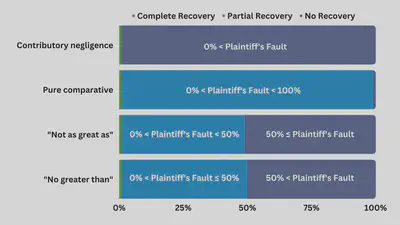Review
In-Class Exercise
You are a wise federal trial judge with experience managing multidistrict litigation for toxic harms. Policymakers are considering establishing a compensation fund for victims of toxic harms. You have been asked to advise the group that is drafting the proposal.
Here are some features of the current plan. To receive compensation, the plaintiff must prove that she was sufficiently exposed to a toxic substance such that the toxic substance could have caused her injury. If there are multiple possible defendants, the plaintiff is not required to prove which defendants are responsible for her injuries. The plaintiff is not required to prove that the defendant was at fault. The plaintiff can receive unlimited compensaton for medical expenses (including medical monitoring) in installments over time, but the plaintiff cannot be compensated for other losses. If the plaintiff receives compensation from this fund, the plaintiff is barred from pursuing any common law tort action related to the injury.
What are the strengths and weaknesses of this plan? What are your suggestions for revision?
Torts Speedrun
Damages
Compensatory Damages
To restore the plaintiff to the position they were in before the accident occurred.
Two types:
- Economic / Pecuniary
- Noneconomic / Nonpecuniary
When are damages excessive?
When they “shock the conscience”
— passion
— prejudice
— whim
— caprice
Single Judgment Rule
Punitive Damages
Due process issues:
— proportionality
— notice
— actions, not identity of defendant
BMW v. Gore Guideposts
— reprehensibility
— disparity between harm and punitive damages awards
— difference between punitive damages and civil penalties
State Farm
In general, should not have more than a single digit ratio of compensatory to punitive damages
How much does each defendant pay?
Order of operations (after establishing multiple liable defendants)
First step:
Separate injuries based on factual cause (if possible)
Second step:
For injuries that multiple defendants caused, sort out who owes what based on the jurisdictional rules.
How much does each defendant pay?
Common Law Approach
Divide up damages by number of liable defendants
Doctrine of contribution:
- Joint and several liability, or
- Several liability
How much does each defendant pay?
Modern Approach
Divide up damages based on comparative fault
Doctrine of contribution:
Variety of rules across jurisdictions, including several liability, joint-and-several liability, and a variety of hybrids.
Negligence
Duty

Landowners and Occupiers
Traditional view:
Trespasser
- duty not to intentionally or wantonly cause injury
- no duty of reasonable care (with handful of exceptions)
Licensee
- no duty to inspect or discover dangerous conditions
- duty to warn or make known conditions safe
Invitee
- duty to inspect and discover dangerous conditions
- duty to warn or make conditions safe
Landowners and Occupiers
Modern view:
Trespasser1
- duty not to intentionally or wantonly cause injury
- no duty of reasonable care (with handful of exceptions)
Everybody Else
- duty of reasonable care
Government duties

Breach

Proving negligence
Constructive notice
Negligence per se
Res ipsa
Medical Malpractice

Causation
Factual Cause
Four tricky factual cause scenarios
- Toxic exposure
- No idea what happened
- Know what happened, but don’t know that it wouldn’t have happened if defendant had behaved reasonably
- Know what happened, but don’t know who to blame
Alternative liability
Marketshare liability
Variations:
— size of market
— time of market
— defenses in individual cases
— several or joint-and-several liability
Proximate Cause
Not about causation
Unexpected harm
Additional harm
Intervening causes
Unexpected victim
Defenses to Negligence
Contributory negligence

Comparative negligence

Assumption of Risk
volenti non fit injuria
- Explicit / Express
- Implicit
-— Primary
-— Secondary
Should assumption of risk persist in a comparative fault world?
- Explicit / Express → Duty
- Implicit
-— Primary → Duty
-— Secondary → Comparative Fault
Strict Liability
- Very dangerous activity that cannot be made safe by exercising reasonable care
- Products
Products liability
- Manufacturing defect
- Design defect
— Two tests:
— 1) Consumer expectations
— 2) Excessive preventable danger
- Failure to warn
Defenses
- Contributory and comparative negligence
- Disclaimers and waivers (basically assumption of risk)
— Not a valid defense in most jurisdictions! But a handful do allow it.
Intentional torts
Intentional Torts:
— Battery
— Assault
— False imprisonment
— Intentional infliction of emotional distress
Defenses:
— Consent
— Self-defense
— Defense of property
— Necessity
IIED

NIED

Insurance
First party insurance
Third party (liability insurance)
Collateral source rule
Subrogation
Workers Comp
- No fault
- Exclusive remedy for work-related injuries
Benefits include:
—— Medical coverage
—— Percent of lost wages
—— Vocational rehabilitation
—— Survivor benefits
No-Fault and Beyond
Common features:
- Narrow category of injury
- Reduced fact-finding and proof requirements
- Fixed recovery amounts
- Insurance-like funding rather than individual defendant-to-plaintiff payouts
9-11 fund’s unique characteristics:
- created after the harm, not in anticipation of harm
- individualized approach to economic loss
- tort-like awards for noneconomic loss
- low administrative costs
Big Picture
What is tort law about?
What values should guide this part of our legal system?
— Corrective justice?
— Optimal deterrence?
— Distributive justice?
Or in California and the Third Restatement, a “flagrant” trespasser rather than just a plain old trespasser ↩︎